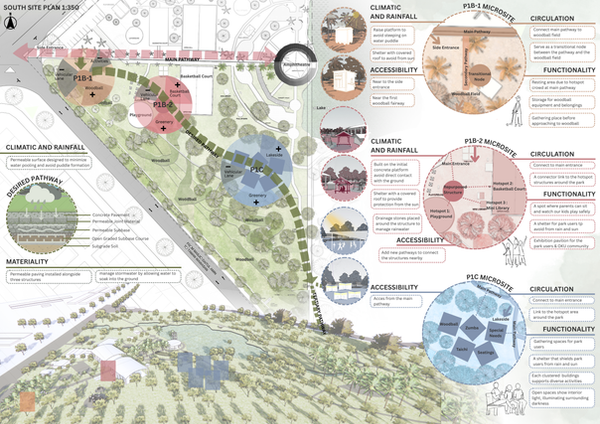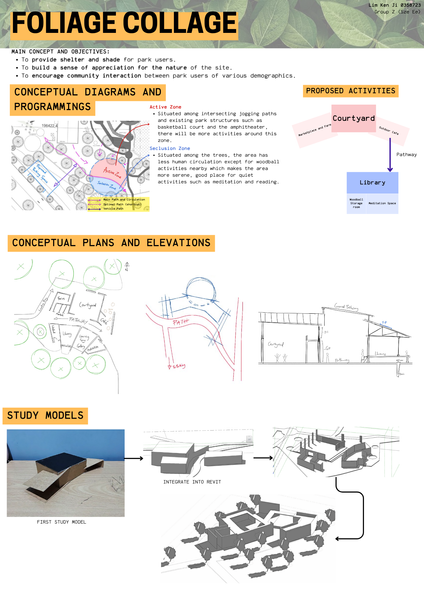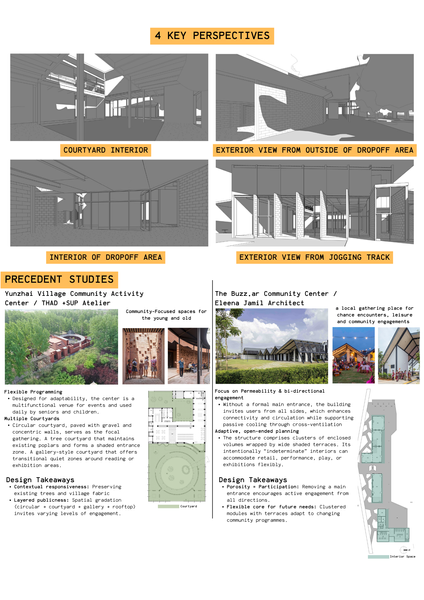
ARCHITECTURE DESIGN 4
This module emphasizes the integration of environmental sustainability and social responsibility in architectural design. Students explore complex spatial typologies within real site contexts by addressing the needs of specific communities through thoughtful design responses. The module encourages the use of environmental poetics, passive strategies, and contextual analysis to shape architectural solutions that foster meaningful user experiences and harmonious relationships with the natural and built environment.
Project 1A: Site Analysis & Design Response – Design for Community
Project 1A focuses on understanding and analyzing the physical, environmental, and social context of a selected site to inform community-centered architectural design. Through site visits, data collection, and user engagement, this project aims to uncover both tangible and intangible qualities that define the character and needs of the site. The analysis includes studying topography, vegetation, climate, built context, and socio-cultural activities.
A0 Board

Project 1B: Small Community Structure
Building upon insights from the site analysis in Project 1A, this project challenges us to explore how architectural form and chosen materials can support communal activities and convey meaning. The focus is on creating an experiential space that responds to environmental and social needs, while also showcasing construction logic and detailing that enhance the design’s spatial quality and function.
P1B Small Structure

Project 1C: MyReka-reasi Cluster
Integrating findings from earlier projects, students are tasked with crafting a design narrative that responds to environmental poetics, community needs, and the existing context. The project explores clustered spatial typologies and passive design strategies to reduce environmental impact while enriching the user experience. Through iterative development, conceptual modeling, and final presentations, students are expected to demonstrate a holistic and sustainable architectural solution that fosters a strong sense of place and community.
Interim 1


Interim 2




Final Presentation





